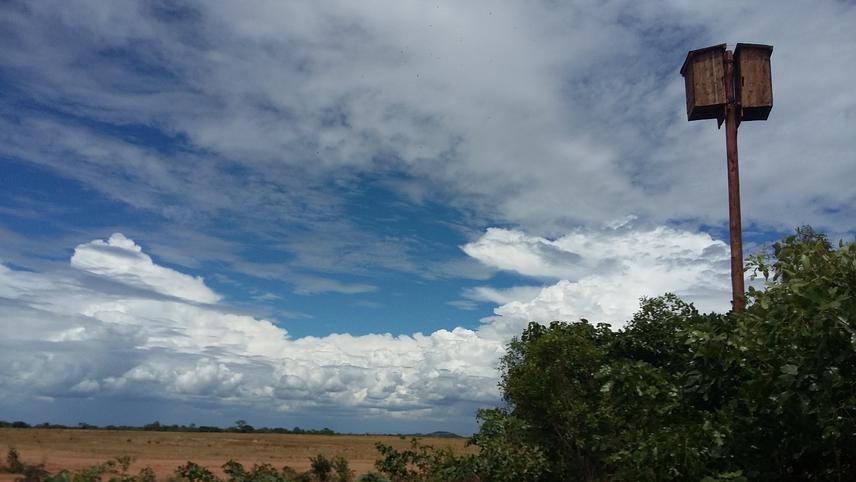Helen Taylor-Boyd
Other projects
This project aims to provide sound scientific information about bats in Zambia on which to make development and habitat management decisions. In this phase we will focus on the effects of agricultural practices on bat species and investigate the ecological roles that bats play in farming ecosystems, such as predation of insect crop pests. We also aim to examine the perceptions of bats within the industry sector. By engaging and training local people for field work we aim to facilitate a legacy of increased research capacity in the future.
In addition, we will conduct community engagement activities with the public, such as educational presentations and carrying out roost and landowner visits to advise residents on living with their bats which will improve public knowledge of bats and reduce human-bat conflict.

Bat boxes on a farm.
This project involves investigation into the use of landscapes in Zambia by Chiroptera (bats) and will initiate awareness campaigns within local communities. By undertaking research into the ecology of bat species and engaging with local communities, a better knowledge base can be established, for the sake of bats, habitats and local people.
There are currently over 70 species of bat known to occur in Zambia. Only 3 are classed as near threatened according to IUCN, based on threats identified elsewhere in their known ranges and not on Zambian populations. However, 51 Zambian bat species have unknown population trends and despite this, the majority of these (46) are classified as Least Concern. Another 5 species have been identified as being of priority conservation concern by more recent studies due to range and niche restrictions as well as endemism in southern Africa (Cooper-Bohannon et al., 2016).
Zambia has a fast-growing human population, expected to triple between 1990 and 2025, which is likely to result in drastic consequences for bat populations, due to habitat loss and persecution (Hutson et al. 2005). Ecologically and economically essential species may be lost before we can understand their importance; we may be losing valuable ecosystem services such as insect predation and seed dispersal.
Growing human populations mean that food production will need to also increase. As the agricultural industry grows, habitat loss and pesticide use increase, resulting in greater threats to a whole host of organisms including bats; conservation farming is becoming ever more important. Anthropogenic habitats can be managed to encourage bat species, for example bat housing, tree planting and landscape management (Monadjem et al 2010).
We have clear gaps in research and conservation of bat species in Zambia. During this project phase we are focussing on agricultural landscapes and using various acoustic, trapping, tracking, dietary analysis and genetic methods to explore their habitat and feeding ecology, which may help us to gain a better understanding of their ecological and anthropogenic value, as well as their conservation status.